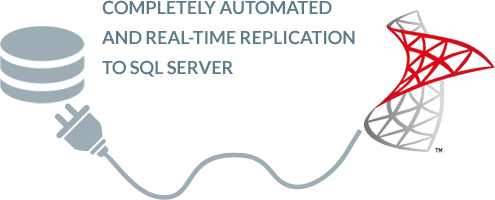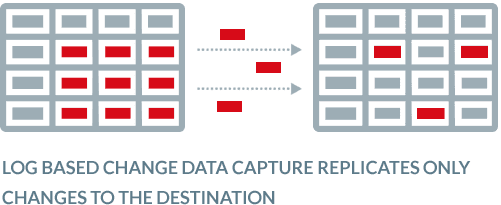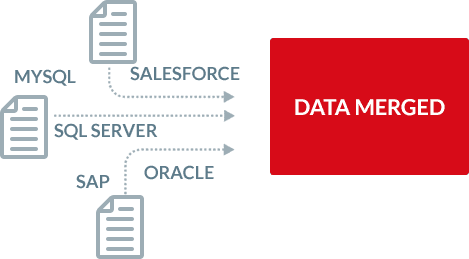Oracle to SQL Server migration in real-time
Oracle replication to SQL Server with BryteFlow
When you need to ETL Oracle to SQL Server, automated data replication with BryteFlow makes the most sense. BryteFlow can be set up in less than a day and replicates Oracle data to SQL Server in real-time. At the end of the day you need data ingestion that is cost effective, easy to use and fast. BryteFlow is a tool for automated Oracle replication that delivers data in real-time, without ANY coding. Oracle to SQL Server Migration: Reasons, Challenges and Tools
Get a Free Trial of BryteFlow
Codeless, automated, real-time Oracle to SQL Server migration
Continually replicate data from Oracle to SQL Server using BryteFlow and never write a line of code. BryteFlow migrates your data from Oracle to SQL Server in almost real-time and refreshes it continually, using Change Data Capture to keep up with changes at source. BryteFlow’s easy drag and drop interface and built-in automation means you never need to code. Just a few clicks to connect and you can begin to access prepared data in SQL Server for analytics. Merge data from any database, files or API with your Oracle data and transform it to a consumable format for SQL Server. BryteFlow also provides automated reconciliation and continually reconciles your data with data at source. You will get alerts and notifications if data is missing or incomplete. Oracle CDC (Change Data capture): 13 Things to Know
Real-time data ingestion to SQL Server
- Low latency, log based CDC replication with minimal impact on source. Real-time Oracle Replication step by step
- Optimised for SQL Server. Change Data Capture Types and CDC Automation
- No coding needed, automated interface creates exact replica or SCD type2 history on SQL Server.
- Manage bulk data ingests easily with parallel loading and automated partitioning mechanisms for high speed.
- BryteFlow provides replication support for all Oracle versions, including Oracle 12c, 19c, 21c and future releases for the long term.
- Automated data reconciliation to validate completeness of data. Oracle to Snowflake: Everything You Need to Know
BryteFlow for Oracle
Oracle to Azure Cloud Migration (Know 2 Easy Methods)
Real-time and automated Oracle replication to SQL Server

This data replication tool replicates really large volumes of data from Oracle to SQL Server fast
BryteFlow uses parallel multi-thread loading, smart partitioning and compression of data to ingest terabytes of data for Oracle replication to SQL Server. BryteFlow XL Ingest has been specially created for the initial full ingest of large volume data at super-fast speeds. After this BryteFlow Ingest takes over for continual data replication.

Oracle replication to SQL Server is completely automated
Most Oracle data tools will set up connectors and pipelines to stream data from Oracle to SQL Server but there is usually coding involved at some point for e.g. to merge data for basic Oracle CDC. With BryteFlow you never face any of those annoyances. Oracle data replication, data merges, SCD Type2 history, data transformation and data reconciliation are all automated and self-service with a point and click interface that ordinary business users can use with ease.

Our data integration software uses efficient Oracle CDC to replicate changes not time-consuming ETL
Very often software depends on a full refresh to update destination data with changes at source. This is time consuming and affects source systems negatively, impacting productivity and performance. BryteFlow uses log-based Change Data Capture which is zero impact and uses database transaction logs to query Oracle data at source and copies only the changes into the SQL Server database. The data in the SQL Server data warehouse is updated in real-time or at a frequency of your choice. Log based Oracle CDC is absolutely the fastest, most efficient way to do Oracle SQL Server migration.

Cut down time spent by Database Administrators in managing the Oracle replication
You need to work out how much time your DBAs will need to spend on the solution, in managing backups, managing dependencies until the changes have been processed, in configuring full backups and then work out the true Total Cost of Ownership (TCO) of the solution. The replication user in most of these replication scenarios needs to have the highest sysadmin privileges.
With BryteFlow, it is “set and forget”. There is no involvement from the DBAs required on a continual basis, hence the TCO is much lower. Further, you do not need sysadmin privileges for the replication user.
Oracle to SQL Server Migration: Reasons, Challenges and Tools

Automated data reconciliation in the SQL Server data warehouse
With BryteFlow, data in the SQL Server warehouse is validated against data in the Oracle replication database continually or you can choose a frequency for this to happen. It performs point-in-time data completeness checks for complete datasets including type-2. It compares row counts and columns checksum in the Oracle replication database and SQL Server data at a very granular level.Very few data integration software provide this feature.

Data from Oracle to SQL Server is monitored for data completeness from start to finish
BryteFlow provides end-to-end monitoring of data. Reliability is our strong focus as the success of the analytics projects depends on this reliability. Unlike other software which set up connectors and pipelines to Oracle source applications and stream your data without checking the data accuracy or completeness, BryteFlow makes it a point to track your data. For e.g. if you are replicating Oracle data to SQL Server at 2pm on Thursday, Nov. 2019, all the changes that happened till that point will be replicated to the SQL Server database, latest change last so the data will be replicated with all inserts, deletes and changes present at source at that point in time.

The option to archive data while preserving SCD Type 2 history
BryteFlow provides time-stamped data and the versioning feature allows you to retrieve data from any point on the timeline. This versioning feature is a ‘must have’ for historical and predictive trend analysis.

Your data maintains Referential Integrity
With BryteFlow you can maintain the referential integrity of your data when replicating from Oracle to SQL Server. What does this mean? Simply put, it means when there are changes in the Oracle source and when those changes are replicated to the destination (SQL Server) you can put your finger exactly on the date, the time and the values that changed at the columnar level.

Merge Oracle data with data from other sources
With BryteFlow you can merge any kind of data from multiple sources with your data from Oracle for Analytics or Machine Learning. BryteFlow supports replication to all editions of SQL Server.

Data replication 6x faster than Oracle GoldenGate
BryteFlow replication of data is 6 x faster than GoldenGate’s. This is based on actual experience with a client and not an idle boast. Try out BryteFlow for yourself and see exactly how fast it works for Oracle replication to SQL Server.

Data gets automatic catch-up from network dropout
If there is a power outage or network failure will you need to start the Oracle to SQL Server migration process over again? Yes, with most software but not with BryteFlow. You can simply pick up where you left off – automatically.

Remote log mining possible
With BryteFlow you can use remote log mining. The logs can be mined on a completely different server therefore there is zero load on the source. Your operational systems and sources are never impacted even though you may be mining huge volumes of data.

About Oracle Database
Oracle DB is also known as Oracle RDBMS (Relational Database Management System) and sometimes just Oracle. Oracle DB allows users to directly access a relational database framework and its data objects through SQL (Structured Query Language). Oracle is highly scalable and is used by global organizations to manage and process data across local and wide area networks. The Oracle database allows communication across networks through its proprietary network component.

About Microsoft SQL Server
Microsoft SQL Server is a software that is a relational database management system owned by Microsoft. It’s primary objective is to store data and then retrieve it when other applications request it. It supports a huge range of applications including transaction processing, analytics and business intelligence. The SQL Server is a database server that implements SQL (Structured Query Language) and there are many versions of SQL Server, engineered for different workloads and demands.


